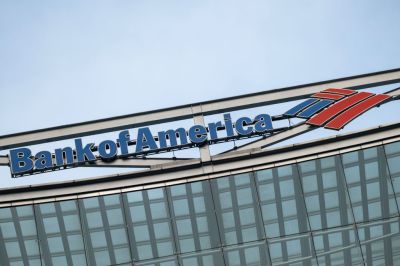Editor’s Note: This story originally appeared in On Balance, the ARTnews newsletter about the art market and beyond. Sign up here to receive it every Wednesday.
Back in June, Puck’s Marion Maneker created a minor stir when he proposed a previously untold effect of the ongoing art market slowdown. High interest rates, he reported, had slammed the brakes on art lending, the growing business of banks and specialist firms lending against high-net-worth collectors’ art.
The macroeconomic theory appeared sound. In the 2010s and the Covid era, interest rates were at their lowest level in decades and the value of artworks had risen steadily. Borrowing money had never been cheaper. But by this year, with interest rates on the incline over the last three years and the art market seemingly ground to a halt, one theory was that the loan business would slow as well.
But conversations with half a dozen specialist art lenders, as well as those at major banks, paint a far different picture of the art lending sector, one in which business is booming, in no small part because of the larger stalling of the art market.
Among the big bank lenders, the largest, by far, is Bank of America. While sources speculated to Maneker that the bank’s $10 billion loan book had dropped to $8 billion over the last 18 months, Drew Watson, the head of art services at the bank, said the bank’s book was actually up 10 percent this year.
That growth, Watson told ARTnews, is tied to a long-term trend possibly more vital to the art world than interest rates: collectors are increasingly incorporating their art holdings into their “overall wealth strategy.”
“There’s also a generational shift happening now. Younger people are being more opportunistic about their collections and other tangible assets,” he said, pointing to the annual Art & Finance report by Deloitte and ArtTactic. Published last year, it estimated that the art lending business was up 11 percent from 2022, reaching a total value of between $29.2 billion and $34.1 billion.
Watson added that the less than “robust” current market is another factor pushing collectors toward loans. “Borrowing when the market is down is an alternative that some collectors pursue to avoid selling into a down market,” he said.
The other two major institutional players are Citibank and J.P. Morgan. While J.P. Morgan declined to comment on its art loan business, Citibank’s head of art finance, Fotini Xydas, told ARTnews that its portfolio over the last decade has nearly doubled, the size of the art loans growing as well.
“While our largest market continues to be North America, with approximately 70 percent of our art loan portfolio overall, we have seen particularly strong growth in EMEA [Europe, Middle East, and Africa] and APAC [Asia-Pacific], with average annual growth rates of 18 percent and over 100 percent, respectively, over the past seven to eight years,” Xydas said.
But, as Watson put it, the art lending business is actually two very different businesses. On the one side are the big banks like Bank of America, which can offer interest rates at or close to prime, because they lend against a diverse portfolio. On the other are specialist lenders, who lend only against art. The latter, he said, have to offer interest rates much higher than the big banks.
This begs the question: If the art lending arms of big banks are trumping industry estimates as collectors seek liquidity without selling their works in a slow art market, are the specialty art lenders also riding this wave?

Bank of America’s art loan book is reportedly up 10 percent on industry estimates. (photo Mike Kemp/In Pictures via Getty Images)
In Pictures via Getty Images
The London-based Fine Art Group has been offering loans solely against artworks for more than 20 years; according to CEO Philip Hoffman, it currently has a loan book close to $200 million, with an upper limit of $800 million. But he conceded that current interest rates—and his firm’s need to make a margin of 4 to 6 percent over that—means that lending “isn’t cheap at the moment.”
“If you think art prices are going to go up by 20 to 50 percent over the next three or four years, from a low right now, borrowing against your art does make sense if you don’t want to sell it and you need some financing,” Hoffman said. “On the horizon, interest rates probably come down a percent or two over the next year and a half. I think a lot of people are underleveraged on art or have no leverage.”
Adam Chinn, the former COO of Sotheby’s and now a managing partner at specialist art lender International Art Finance (IAF), told ARTnews that since IAF was launched in 2023, the business has put out $180 million in loans with “significant demand” for more. By the end of the year, he said he expects IAF’s book to be nearer $200 million.
“Obviously, interest rates are high compared to where they were four years ago, but the art business is—and always has been—significantly undercapitalized,” he said. “There’s huge opportunity for art lenders at the moment. A lot of our business is with the dealer/gallery community and they don’t really have access to capital. Historically, the way dealers have raised money is, they’ve gone to someone who has put up the money—but they’ve given up 50 percent of their profit to the funder.”
The other major players in the art lending business are those run by the auction houses—Christie’s Financial Services (CFS) and Sotheby’s Financial Services (SFS). SFS’s global head of lending, Scott Milleisen, told ARTnews that its loan book has doubled from $800 million to $1.6 billion since 2021. (Credit rating agency Morningstar DBRS confirmed the latter figure.) While Christie’s declined to comment about its business, it has publicly said it offers art-backed loans starting at $1 million. An employee at a major art lender familiar with CFS said its business is doing “very well” and estimated its loan book to be “about $500 million.” However, one art financier told ARTnews that Christie’s scaled back on its art lending in 2008 “because the market imploded,” and now uses lending as a means to secure consignments for auction.
Hoffman claimed that his firm, as well as CFS and SFS, are all currently lending at about 10 percent of their potential—and of where they should be in five to eight years’ time. While Milleisen dodged that question, he did say he believes SFS can double the size of its loan book again over the next few years, particularly with interest rates expected to drop further. He added that he thinks the art lending business will heat up even more when the art market picks up and prices start to rise again.
“You need to consider the context of the overall market—Deloitte estimates the lending market to be worth around $30 billion, so I measure success by taking share of this figure,” he said. “We are creating a new paradigm at SFS by offering large loans of $100 million or more backed solely by the value of art. That has never been done before. To go from $1.5 billion to $3 billion is totally achievable.”

Sotheby’s is hopeful it can double the size of its art loan book in the next few years. (Photo John Nacion/Getty Images)
Getty Images
In April SFS began offering securities backed by art and collectibles-secured loans for the first time. The $700 million offering has brought the total funding capacity of SFS to $2 billion.
Still, despite the positive buzz around the art lending business, not everyone is buying the swollen loan book narrative.
Jan Prasens, the former managing director of SFS and principal of JP Art & Finance advisory, which matches art collectors with financing partners, told ARTnews that a lot of specialty art lenders like to “peacock” when it comes to discussing the size of their loan books. Prasens cautioned that some lenders are putting their own capital at risk, while others are merely acting like agents for outside investors.
Meghan Carleton, a managing partner at US-based, privately owned specialty art lender AOI Advisors, also said loan book figures should be taken with a big pinch of salt. Alessandro Fiorotto, Christie’s former regional managing director of art finance for EMEA and managing director of AF Advisory, told ARTnews that he’s skeptical of claims that the specialty art lending business is thriving. He said the market has become “increasingly saturated with lenders.”
“If you want a $30 million or $50 million loan, collectors are smart enough to shop around—they’ll go to Christie’s and Sotheby’s and find out who is offering the best rate,” he said. “The reality is that the auction houses can lend at a much cheaper rate than [specialty lenders], so they’re rarely going to get those types of big deals. They can’t offer the kind of sweeteners that the auction houses can offer, and they can’t lend at the same rate. They win very few [of these deals]. Independent lenders often like to talk about the value of being independent from the auction houses, but in reality any significant collector in the art world has bought or sold a piece through Christie’s or Sotheby’s, so they already have a relationship with them and they’re going to transact with them in the future.”
As a result, Fiorotto said independent specialist art lenders are left competing for the loans Christie’s and Sotheby’s don’t want, which he said are often “distressed,” “small,” or “carry higher risk.” “While they’re still able to provide loans, I think we’ll start to see a consolidation in the market,” he added.
While Prasens agreed that the market is likely saturated, he said specialty lenders are often the preferred lender for collectors, as many like to keep sale and purchase transactions separate and free of the exclusivity restrictions that an auction house might require in a contract.
“Others like to look at it more holistically and may not mind certain restrictions if it fits their ultimate exit strategy for the collateral,” Prasens said. “Auction houses are uniquely positioned to put in place incentive structures that may reduce the ultimate cost of the loan for the client. This is not so different from how private banks are able to provide low-cost financing on the back of other services they engage their clients with.”
As for Athena Art Finance, while its parent company, Yieldstreet, reportedly laid off half its staff, Athena CEO Rebecca Fine told ARTnews that Athena is “thriving” and has seen 45 percent growth so far in 2024. She said its loan book is around $800 million.
Fine added that Athena’s main competition is not specialty art lenders but the auction houses and, increasingly, private banks that are pulling back from noncore lending operations.
“Athena’s independence is a big competitive advantage because our clients have zero pressure to consign or sell, and when and if they do decide to sell, they can put the auction houses and galleries in competition to achieve the best terms,” she said.
Stephan Ludwig, co-CEO of advisory firm Gurr Johns, told ARTnews that he thinks the specialty art lending business is far from saturated and that the market has adjusted to higher interest rates.
“A lot of our borrowers are borrowing the money to leverage their assets to reinvest in higher yielding assets,” he said. “If you’re looking at a private equity investment that’s going to return 25 percent, paying at 11 percent for the loan, you’ve still got a good margin on that. It’s a very sexy part of the market.”
With art fair season in full swing and the all-important November auctions fast approaching, art lenders will only receive more inquiries, according to Naomi Baigell, the former managing director of Australian specialty art lender TPC Finance.
“People are starting to figure out how to best manage their portfolios—art lending comes into that conversation,” she told ARTnews. “Many collectors take a loan from a specialty art lender rather than an auction house, which might want to capture the collateral artwork for a future consignment, or a bank that typically takes a long time to facilitate a loan. If you know you have capital in your back pocket and you know you’re going to negotiate with a gallery at an art fair, for example, you can do that quite effectively if you can give them cash in hand, and if you have the resources to buy X, Y, and Z. This is a huge advantage.”
This post was originally published on this site be sure to check out more of their content








